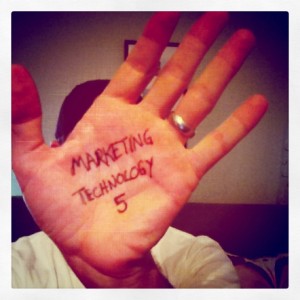Marketing Technology Stories you might have missed
MT5 Edition: Â #30
Stories This Week: Understand Pinterest legal stuff, use magic to create a mobile app, CLV, the new Facebook admin panel and Tweetdeck gets an upgrade.
1. The Copyright Question: How to Protect Yourself on Pinterest
[Mashable] This article digs a bit deeper to help brands understand Pinterest’s Terms of Service regarding copyrights. Pinterest doesn’t own your posts, but you do grant broad licence to Pinterest for the content you post.
My Take: I was pleased to learn that “Cold Brew Labs” owns and operates Pinterest, I like it even more now.
2. Make An iPhone, Android App Without Knowing A Line Of Code
[FastCompany] AppBuilder allows you to build an app for iPhone or Android in minutes. It builds a native app, not an HTML5 website. It also gets around the process of submitting an official app to the App store. This is Apps 2.0.
My Take: THIS. IS. AWESOME. I can’t wait to play with this more. Â It looks better than Conduit Mobile which I was working with previously.
3. Customer Lifetime Value: one of the keys to measuring long-term ROI, among other uses.
[TheBrandBuilder] This is a great infographic that provides specifics on creating a Customer Lifetime Value score. CLV seems like  great way to establish a foundation for a segmentation strategy.
My Take: The models provided work well for retail business, I’d like to see some examples of CLV for B2B. If you have any please hit me up in the comments.
4. How to Use the New Facebook Page Admin Panel
[MashableBusiness] The article provides a good primer for getting started on the new admin panel.
5. Tweetdeck update has better list management, editing retweets
My Take: I’m excited for this update on Mac. Tweetdeck was unusable because it wasn’t refreshing. It earned the low rating in the App Store. So I’m hoping the new version, which I just installed, will actually function – I’m not even focused on the new features yet.







